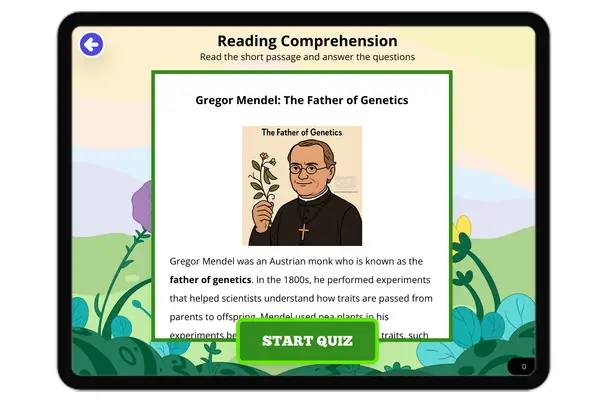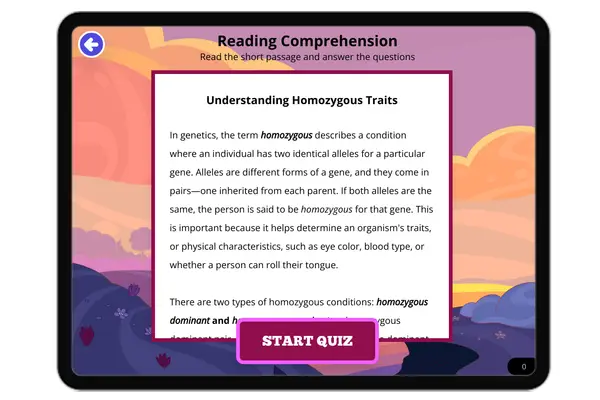What Are the Three Parts of the Cell Theory? — Reading Comprehension
Premium Resource
Grades
- 5
- 6
- 7
- 8
Standards
- MS-LS3-1
- MS-LS3-2
PRINT+DIGITAL RESOURCE
This learning resource is available in interactive and printable formats. The interactive worksheet can be played online and assigned to students. The Printable PDF version can be downloaded and printed for completion by hand.
About This Reader
This NGSS-aligned science reading passage explains the three parts of cell theory in a clear and engaging way for middle school students. Supporting MS-LS1-1, it outlines how all living things are made of cells, the cell is the basic unit of structure and function, and all cells come from pre-existing cells. The passage highlights the work of scientists like Schleiden, Schwann, and Virchow, and includes vocabulary such as 'unicellular,' 'multicellular,' and 'spontaneous generation.' Perfect for building reading comprehension and life science knowledge while meeting NGSS standards.
Perfect For:
👩🏫 Teachers
- • Reading comprehension practice
- • Auto-graded assessments
- • Literacy skill development
👨👩👧👦 Parents
- • Reading practice at home
- • Comprehension improvement
- • Educational reading time
🏠 Homeschoolers
- • Reading curriculum support
- • Independent reading practice
- • Progress monitoring
Reading Features:
📖
Reading Passage
Engaging fiction or nonfiction text
❓
Comprehension Quiz
Auto-graded questions
📊
Instant Feedback
Immediate results and scoring
📄
Printable Version
Download for offline reading
🔊
Read Aloud
Voice-over with word highlighting






















